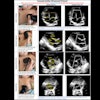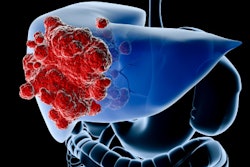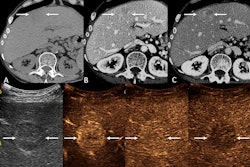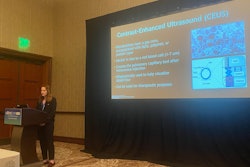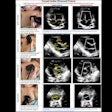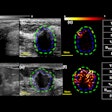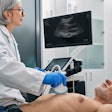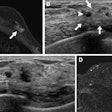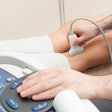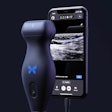Having elastography performed before contrast-enhanced ultrasound (CEUS) could lead to inaccurate liver assessment, suggest findings published June 27 in Ultrasound in Medicine & Biology.
Researchers led by Manxia Lin, MD, PhD, from Sun Yat-sen University First Affiliated Hospital in Guangzhou, Guangdong, China, found that following CEUS, 2D shear-wave elastography (SWE) measurement values initially decreased and later returned to baseline levels. This decrease can lead to downgraded liver fibrosis assessments.
“Furthermore, the liver inflammatory activity is an independent factor influencing the magnitude of the reduction in 2D-SWE measurement values after CEUS,” Lin and researchers wrote.
2D-SWE has grown in use for noninvasively analyzing liver fibrosis and other liver diseases. CEUS, meanwhile, helps differentiate between liver lesions and has shown success in patients with chronic liver disease and cirrhosis.
Previous consensus statements by experts say that 2D-SWE should be completed before performing CEUS on patients to avoid artifacts from microbubbles. But the researchers pointed out a lack of data measuring the impact of microbubbles or CEUS on 2D-SWE performance.
Lin and colleagues explored CEUS’s impact on 2D liver SWE, focusing on liver fibrosis assessment. It also studied the pathological and biological basis of the reported impact.
The prospective study included 111 patients who underwent liver histopathological exams in 2023 and 2024. The researchers performed 2D-SWE at the following phases: pre-CEUS phase, CEUS phase (5 to 6 minutes after contrast injection), early post-CEUS phase (8 to 10 minutes post injection), and late post-CEUS phase (25 to 30 minutes after the injection).
2D-SWE values at the CEUS and early-post CEUS phases were significantly lower than 2D-SWE values at pre-CEUS levels. This included an average difference of 1.7 kPa and 0.9 kPa, respectively (both p < 0.001). At the late post-CEUS phase, 2D-SWE values returned to pre-CEUS levels (p = 0.078).
The team also reported that the percentage of downgrade for significant fibrosis and cirrhosis varied across post-CEUS phases compared to the pre-CEUS phase.
Downgrading of liver findings compared with pre-CEUS phase | |||
Liver finding | CEUS | Early post-CEUS | Late post-CEUS |
Significant fibrosis | 55.3% | 35.3% | 6% |
Cirrhosis | 37.8% | 18.3% | 2.4% |
Finally, liver inflammatory activity independently influenced the differences between the pre-CEUS and CEUS phase 2D-SWE values (p = 0.008, β = 0.88).
“The higher the inflammatory activity grade, the greater the differences in [SWE values],” the team wrote.
Based on these findings and similar results from other studies, the authors recommended performing 2D-SWE either before CEUS or at least 25 to 30 minutes after contrast agent injection. This is to minimize the impact of CEUS on liver findings.
“The changes in 2D-SWE values might be attributable to the combined influence following contrast agent injection,” the authors wrote. “The microbubble structure might lead to a decrease in measurements, while the localized microvasculature effects induced by microbubble rupture might result in an increase in measurements.”
The full study can be accessed here.



